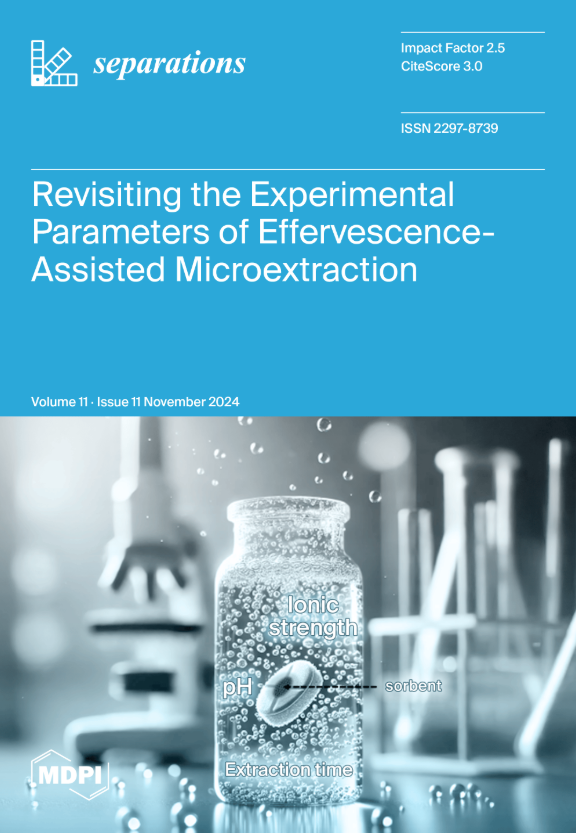低剪切旋转旋流器的设计方法
IF 2.7
4区 工程技术
Q3 CHEMISTRY, ANALYTICAL
引用次数: 0
摘要
管式动力旋流器在海洋石油平台预脱油中具有很大的应用潜力。然而,流场中的剪切和湍流会导致水中的分散相油滴在旋流器产生旋流时发生破裂。提出了一种低剪切旋转旋流器(LSRS)的设计方法,旨在减小流体成形旋流过程中的剪切力和局部湍流。基于流体与旋流器之间的相对速度矢量,计算了低涡发生器的叶片设置角。利用计算流体力学(CFD)模拟了带LSRS的TDH内切向速度和湍流度的分布特征。分析了最大稳定液滴直径。结果表明,与传统旋转旋流器相比,剪切应力和湍流能量耗散率分别降低了74.6%和68.5%,稳定液滴直径增加了60%以上。此外,还在某海上油田进行了带LSRS的TDH样机连续运行36 h以上的试验,平均分离效率为83%,平均底流油浓度为27 mg/L。研究还发现,切向速度沿轴向的剧烈变化是剪切的关键。该结果弥补了动态旋风分离器切向速度空间变化的不足。本文章由计算机程序翻译,如有差异,请以英文原文为准。
Design Methodology for a Low-Shear Rotating Swirler
The tubular dynamic hydrocyclone (TDH) holds great potential for the pre-deoiling of offshore oil platforms. However, the shear and turbulence in the flow field can cause the oil droplets, the dispersed phase in water, to break up when the swirling flow is produced by the swirler. A design method is proposed for the low-shear rotary swirler (LSRS) of TDH, the aim of which is to reduce the shear force and local turbulence during the fluid forming swirling flow. The blade setting angle of the LSRS is calculated based on the relative velocity vector between the fluid and the swirler. The distribution characteristics of the tangential velocity and turbulence in the TDH with LSRS are simulated by Computational Fluid Dynamics (CFD). The maximum stable droplet diameter is analyzed. The results show that the shear stress and turbulence energy dissipation rates are reduced by 74.6% and 68.5%, respectively, and that the stable droplet diameter is increased by more than 60%, compared to the conventional rotating swirler. In addition, a TDH prototype with LSRS was tested in an offshore oil field by continuous operation for more than 36 h. The average separation efficiency was 83%, and the average underflow oil concentration was 27 mg/L. The research also found that the drastic changes in the tangential velocity along the axial direction were critical to shear. Moreover, the results make up for the deficiency of the spatial variation of the tangential velocity in the dynamic cyclone separator.
求助全文
通过发布文献求助,成功后即可免费获取论文全文。
去求助
来源期刊

Separations
Chemistry-Analytical Chemistry
CiteScore
3.00
自引率
15.40%
发文量
342
审稿时长
12 weeks
期刊介绍:
Separations (formerly Chromatography, ISSN 2227-9075, CODEN: CHROBV) provides an advanced forum for separation and purification science and technology in all areas of chemical, biological and physical science. It publishes reviews, regular research papers and communications. Our aim is to encourage scientists to publish their experimental and theoretical results in as much detail as possible. There is no restriction on the length of the papers. The full experimental details must be provided so that the results can be reproduced. There are, in addition, unique features of this journal:
Manuscripts regarding research proposals and research ideas will be particularly welcomed.
Electronic files and software regarding the full details of the calculation and experimental procedure, if unable to be published in a normal way, can be deposited as supplementary material.
Manuscripts concerning summaries and surveys on research cooperation and projects (that are funded by national governments) to give information for a broad field of users.
The scope of the journal includes but is not limited to:
Theory and methodology (theory of separation methods, sample preparation, instrumental and column developments, new separation methodologies, etc.)
Equipment and techniques, novel hyphenated analytical solutions (significantly extended by their combination with spectroscopic methods and in particular, mass spectrometry)
Novel analysis approaches and applications to solve analytical challenges which utilize chromatographic separations as a key step in the overall solution
Computational modelling of separations for the purpose of fundamental understanding and/or chromatographic optimization
 求助内容:
求助内容: 应助结果提醒方式:
应助结果提醒方式:


